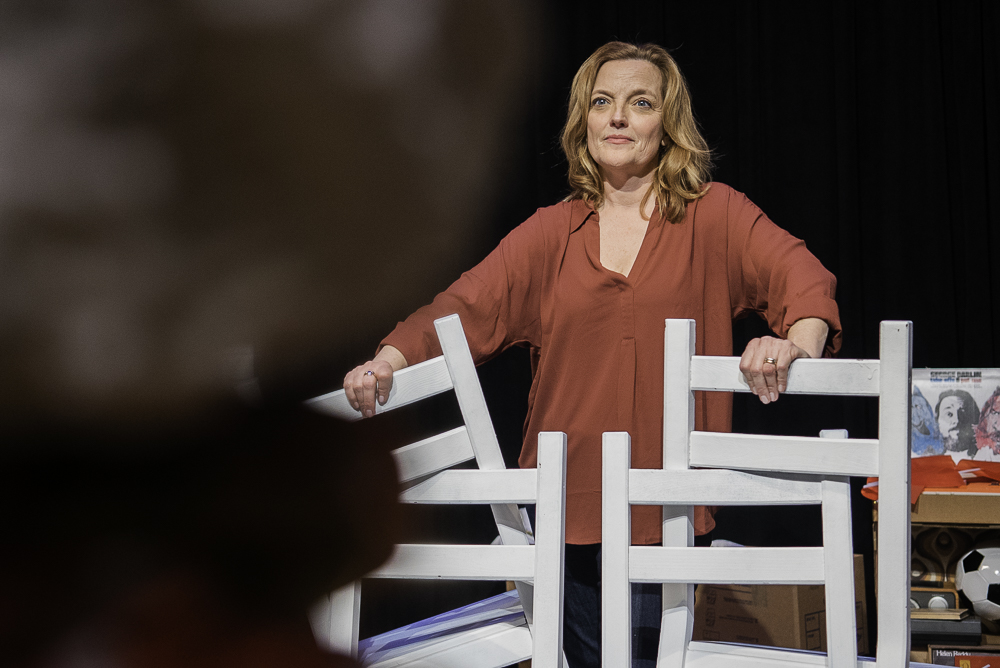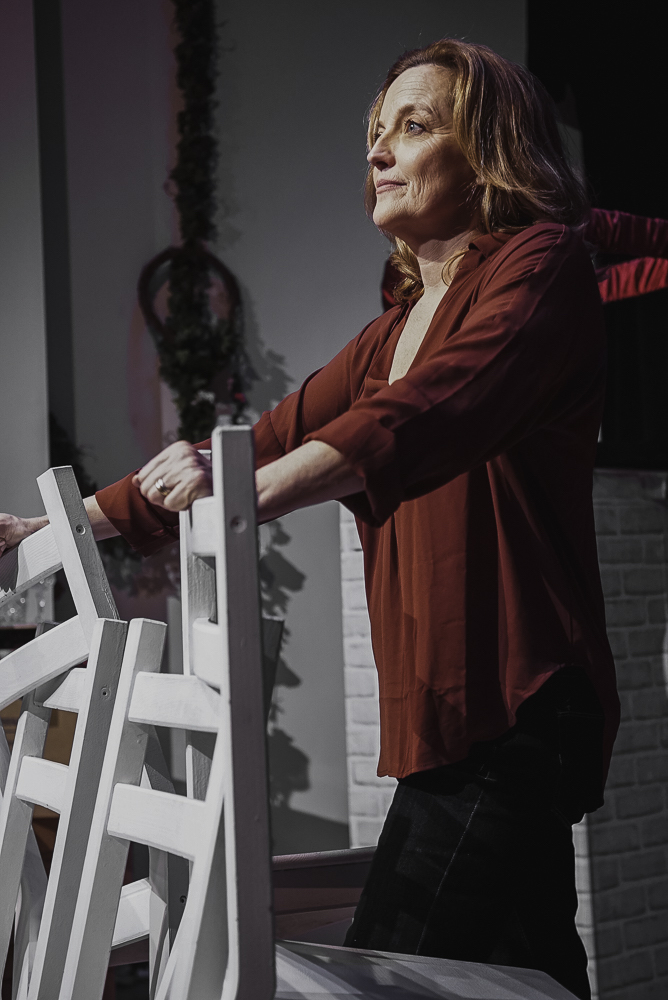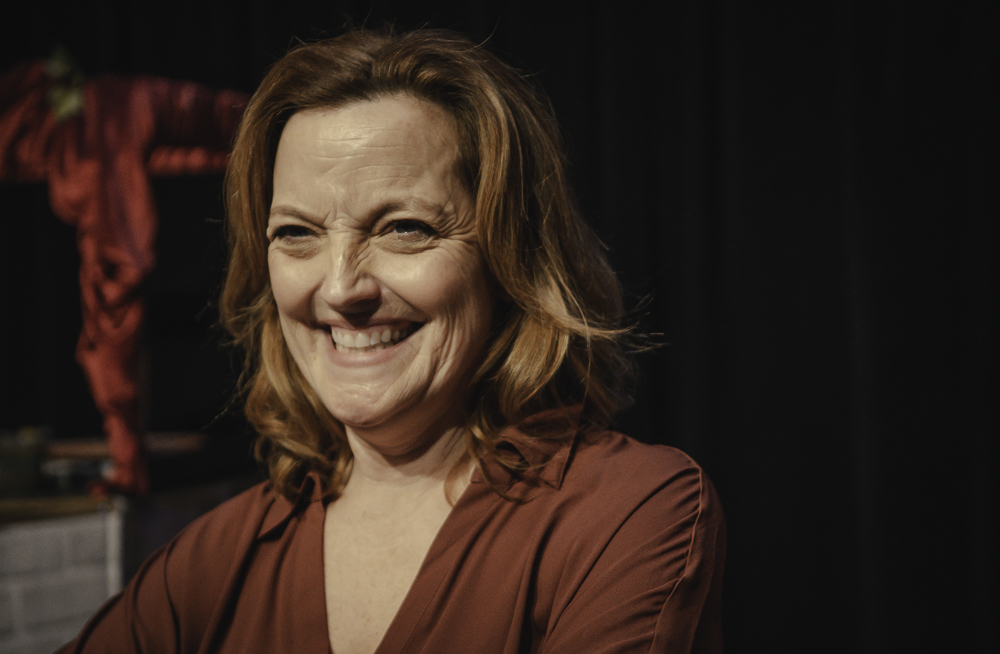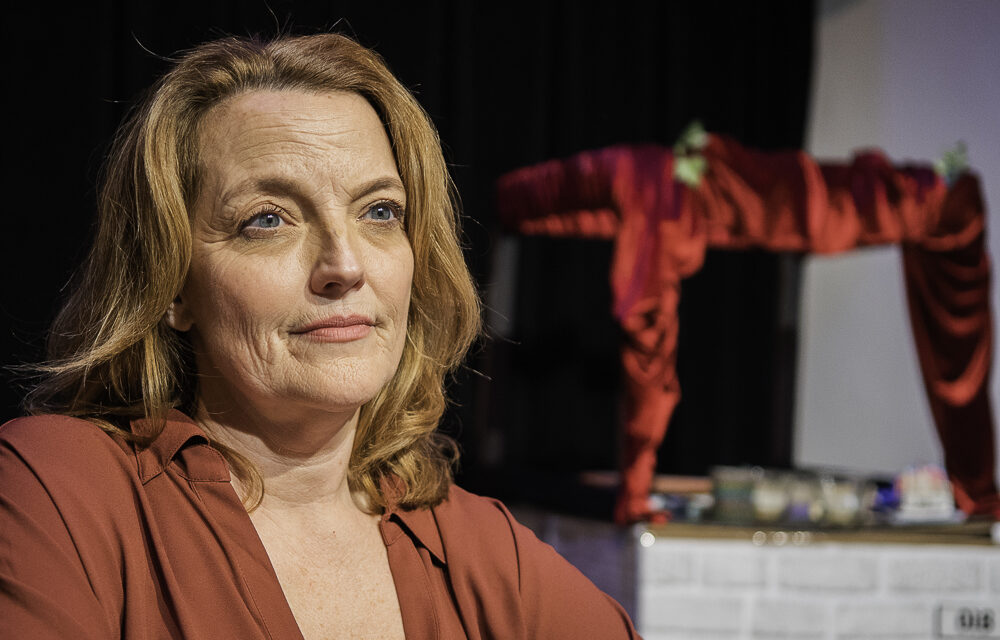By Walter Murphy . . .
Every family has stories. In my family the best ones are usually preceded with a dismissive: “we don’t talk about that.” Then I know it’s a good story involving alcohol, bad behavior, misunderstandings, anger, grudges, and laughter. We have no problem sharing sad stories freely. It’s a trait we share with the family presented in It’s in the Play written by Orlagh Cassidy and Kate Lardner and now playing at The Cell as part of the 15th annual Origin 1st Irish Theatre Festival.
The play’s story centers on a family matriarch’s final days (it’s not an Irish play without a death), and the youngest daughter’s (Orlagh) reaction to this and other key events from her life. The title comes from what Orlagh and her sister would say about odd events that happened in their family. When young, they planned to write a play about the family, concluding it would be easy because “it would write itself.” They merely had to be present and observant. Although the play is performed, masterfully, by one person, all family members are represented. Given the stream-of-consciousness style of the storytelling, in which thoughts and remembrances appear quickly, the audience too must be present and observant. The reward is an engrossing glimpse into an interesting and conflicted family. Time well spent.

Although the matriarch—an accomplished woman, feminist, mother, wife, scientist, professor and alcoholic—is the focus of the story and family, Orlagh’s father and her siblings all appear in her memories. Older sister Grainne, a talented actress, older brothers Diarmuid and Puggy (Padraic), and aunts and uncles occupy Orlagh’s thoughts and speech. Each elicit the Irish mix of sadness and laughter, more often tilting toward the former. There is an impending death that drives the narrative after all.
When Orlagh realizes her mother will soon pass, other scenes from her life emerge in her thoughts, and thus, in her story. Her sister’s suicide, Diarmund’s erratic, bipolar behavior, her parent’s divorce, infidelity, her father’s estrangement and possible abuse of her and brother—her stream of consciousness becomes a flood of lifelong remembrances in adulthood while still childhood memories. There is a lot going on.


Keeping it all together is the performer and writer Orlagh Cassidy. Her experiences, presumably, form the narrative of the play. As the sole performer, she is the play. It is her life. And through all the heartbreak and sadness and much laughter, her character survives and thrives. An early glimpse of her strength is a recitation of all she must do before leaving for DC to see her mother in the hospital, a checklist of caring for herself and her husband and sons. Ms.Cassidy commands attention as only an Irish redhead could. I particularly liked when she spoke as her mother in a “four Scotches in”’ brogue that evoked old aunties on St. Paddy’s Day.
The family emigrated to the U.S., settling in Washington DC for the mother’s career, while maintaining strong connections to Ireland and those left behind. As a result, Irish references abound. Aunts and uncles, country gardens, Dublin, JFK’s visit to the old sod, the song Molly Malone, Waterford crystal, Irish dance lessons, a Claddagh ring, and, of course, the Catholic Church are woven throughout the narrative.
Kira Simring, the director, effectively used props and moving chairs to signal topic transitions, which worked well given the intimate size of the theater. Scenes “changed” from Orlagh’s NYC home to her Washington DC home, to childhood time spent with her mother, to conversations with her brothers, all through Orlagh’s rearrangement of the chairs, by moving objects of significance, or pulling some memento out of a cardboard box.


The sound design by Kirk Ruby worked well. The too-realistic phone and text notifications in the play had me checking my phone (I should have turned it off. D’oh!) The lighting design by Dalia Sevilla was very effective in mirroring the emotional levels of the narrative, subtly changing with moods. The set, by Anita Sibony de Adelsberg, looked a bit festooned, evoking an attic full of family memories. Although some parts and pieces seemed flimsy compared to the sturdy chairs Ms. Cassidy flung about the stage like a longshoreman, props were plentiful and well-used.
With a runtime of approximately 90 minutes, as a testament to Ms. Cassidy’s hold of the audience, I was surprised at its sudden ending. I’d lost track of time. However, I really liked how the writers used a brief anecdote from an Irish farmer about his children and a pregnant pig. It was the perfect metaphor for the relationship between mother and children. And a final reminder that the Irish love to combine pathos with humor, like smiling and saying, “it’s a sad thing.”
It’s in the Play is part of the 1st Irish Festival organized by the Origin Theatre Company which will be presenting works of Irish playwrights through the month of January. Although part of 1st Irish, this play is also in repertory with the cell theater and may appear there in the future. The remaining performances are Friday, January 27 @ 6:00 pm, Saturday, January 28 @ 8:30 pm and Sunday, January 29 @ 5:30 pm. www.origintheatre.org
Photos: Rory Duffy


















